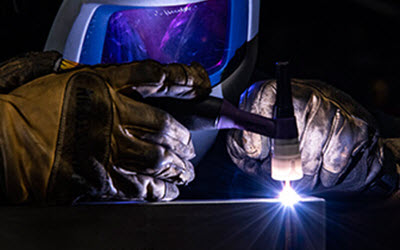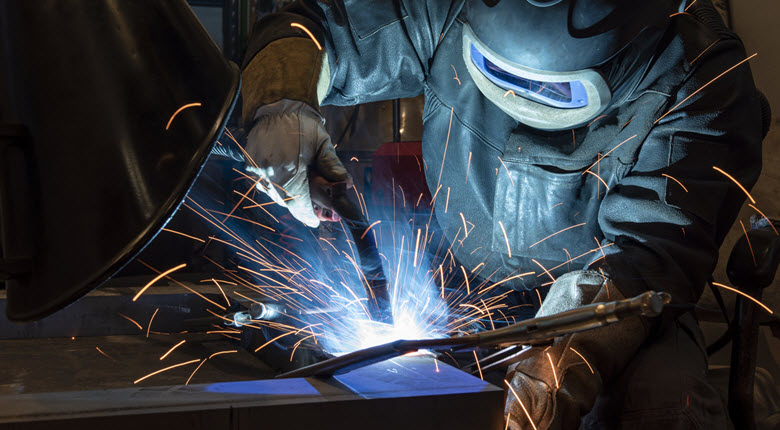Welding is a fabrication or sculptural process that joins materials, usually metals or thermoplastics, by causing coalescence. This is often done by melting the workpieces and adding a filler material to form a pool of molten material (the welding pool) that cools to form a joint that can be as strong as the base material. As, Welders in Oxnard, Ventura, and L.A. we utilize these techniques to deliver high-quality results.
Welding is distinct from lower temperature metal-joining techniques such as brazing and soldering, which do not melt the base metal. In addition to melting the base metal, a filler material is often added to the welding pool. As, Welders in Oxnard, Ventura, and L.A. we often have to choose the appropriate technique based on the specific requirements of the project.
Welding is performed by using heat to melt the metals to be joined, along with a filler material (if used). Metal welding can be dangerous due to the extreme heat involved, so proper safety precautions must be taken. However, when done properly, welding can create strong, long-lasting joints. This is why as professional welders in Oxnard, Ventura, and L.A. we are highly trained in safety protocols and precision techniques.
The most common welding process is arc welding, which uses an electric arc to generate heat. Other welding processes include gas welding, resistance welding, and laser welding. Each welding process has its own advantages and disadvantages, so it’s important to choose the right process for the job at hand. Welders in Oxnard, Ventura, and L.A. need to know how to perform the job properly to avoid defects, which can cause a nightmare of problems.
5 Common Welding Problems that Cause Costly Defects from Expert Welders in Oxnard, Ventura, and L.A.
Welding is not without its challenges, and welding defects are a common issue that welders must deal with. Some of the most common welding defects include:
Porosity
Porosity is a void or cavity within the weld that can occur when gas bubbles become trapped during welding. Porosity can occur for a number of reasons, including dirty or rusty metal, incorrect welding parameters, or welding in an environment with too much atmospheric contamination. Porosity can weaken the overall strength of the weld, and can also create leak paths that allow fluids or gases to pass through the welding joint. As Welders in Oxnard, Ventura, and L.A. we often use advanced techniques to minimize porosity and ensure strong welds.
As a result, it is important to take steps to prevent welding porosity whenever possible. Some common prevention methods include cleaning the base metal before welding, using appropriate welding parameters, and welding in a well-ventilated area.
Weld bead profile
Weld bead profile is a welding defect that can occur when the welding torch is not held at the correct angle or when the welding current is too low. This results in an uneven weld bead which can be either convex or concave in shape. Uneven weld beads can lead to welding defects such as porosity, incomplete fusion, and lack of penetration. In addition, uneven weld beads can cause the finished welding joint to be weaker and more susceptible to corrosion.
Undercut
Undercut is a welding defect that occurs when the welding torch or electrode melts too deeply into the base metal. This can create a hole in the weld, known as an undercut, which weakens the joint and can lead to cracking. Undercut can also cause the weld bead to be unstable and can make it difficult to remove welding slag.
Welders can avoid undercut by using a smaller welding torch or electrode and keeping the welding torch at a consistent angle. If an undercut does occur, it can often be repaired by filling the hole with a welding rod or by grinding away the excess metal.
Incomplete fusion
Incomplete fusion is an imperfection that occurs when the welding torch does not evenly melt all of the materials to be joined. This can happen for a variety of reasons, including poor welding technique or incorrect welding parameters. Incomplete fusion can lead to joint weakness and susceptibility to cracking. It is therefore important to be aware of the potential for this type of welding defect. Proper training and quality control are essential for any welder in the Oxnard, Ventura, or L.A.
Welding operators should be properly trained in welding techniques and procedures, and welding quality should be closely monitored to ensure that defects such as incomplete fusion are not present.
Burn-through
Burn-through is an imperfection that occurs when the welding torch melts through the base material. While welding defects can be frustrating, they can usually be remedied with practice and proper technique. Being expert welders in Oxnard, Ventura, and L.A. we often refine their skills continuously to avoid such defects.
Call Laserworx Today
By understanding the causes of  welding defects and how to prevent them, proper welding can be accomplished to ensure your project is a success!
welding defects and how to prevent them, proper welding can be accomplished to ensure your project is a success!
From small projects to mass production, our team of welders in Oxnard, Los Angeles, and Ventura, will always meet and exceed your expectations with a job well done. Please call us today with any questions or to speak with one of our team members to learn more!



